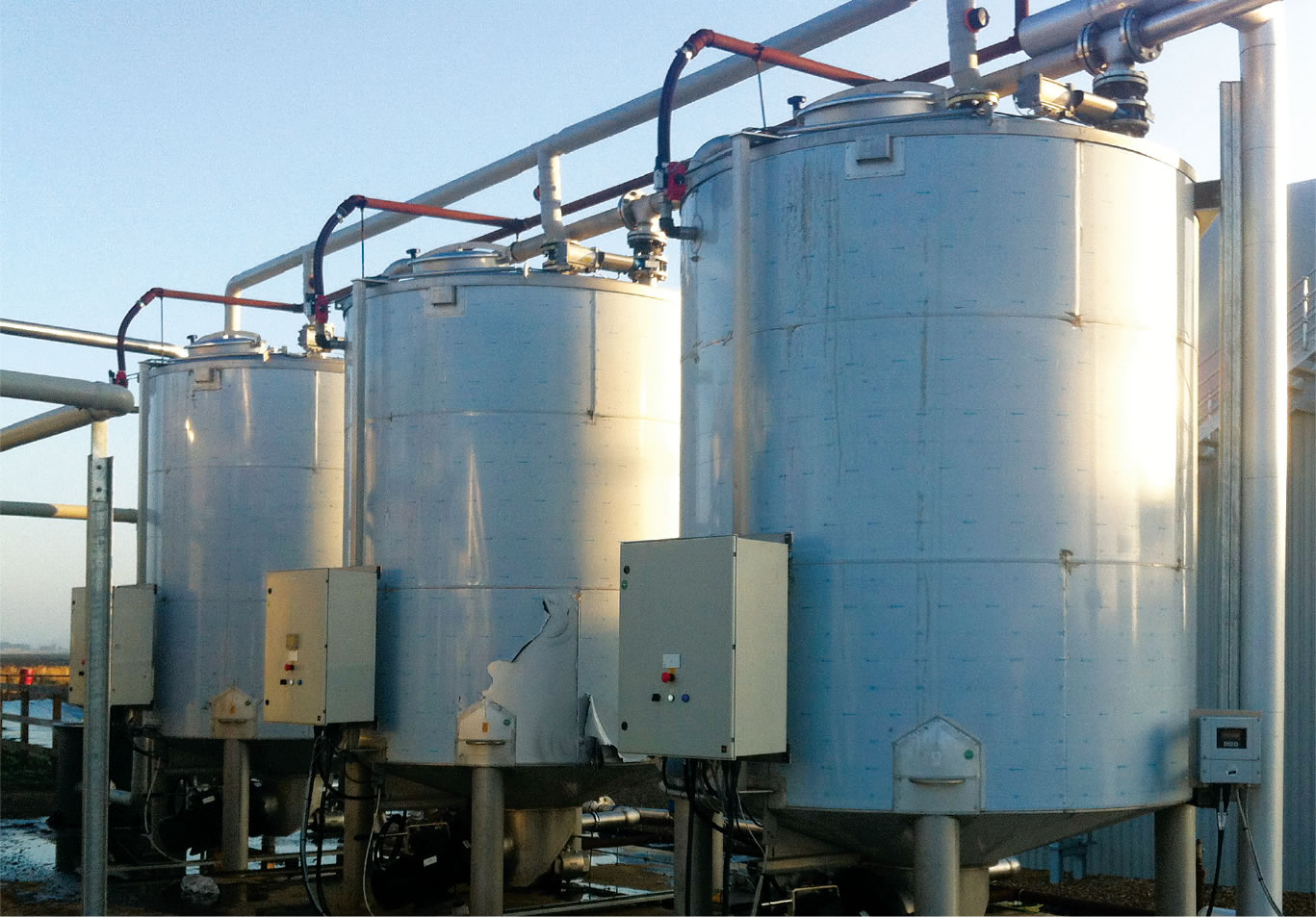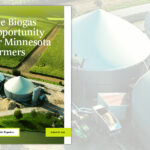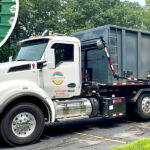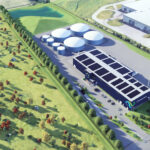BioCycle December 2015
Washington, DC: EPA Paper On Anaerobic Digestion
“Anaerobic Digestion And Its Applications,” released in October 2015 by the Core Anaerobic Digestion (AD) Technical Team within the U.S. Environmental Protection Agency, is a 24-page paper that provides a brief overview of the science of anaerobic digestion. This paper is intended to be the first of many collaborations of the Core AD Technical Team. The document presents basic technical information and indisputable facts regarding the AD process to anyone interested in learning about the technology. It describes how increased implementation of AD systems supports current EPA priorities and summarizes applications of AD systems to achieve various environmental goals across the agency’s water, solid waste, air resources and climate offices. “The mission of the Core Team is to synthesize the Agency’s knowledge, reach consensus regarding technical and scientific facts surrounding AD systems, and develop consistent and effective communications about anaerobic digestion,” notes the Introduction. “AD systems are built by stakeholders for different reasons, including a waste treatment step, a means to reduce odors, a source of additional revenues or a way to improve public image. … AD systems can impact several environmental sectors, particularly methane control, production of renewable energy, and integrated waste management.”
Littleport, Cambridgeshire, UK: Pasteurizing Digestate To Meet PAS 110 Rule
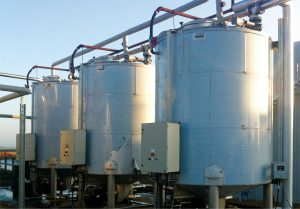
Landia freestanding pasteurization systems in Littleport, Cambridgeshire, UK, installed by Shropshire Energy.
Shropshire Energy installed an anaerobic digester on a farm in Littleport where it processes 110,230 tons/year of maize silage and vegetable “outgrades” — shapes/sizes of produce that aren’t accepted by retailers — and produces 2.5MW of renewable energy. Pasteurized digestate, as required by the UK’s BSI (British Standards Institution) PAS 110 anaerobic digestion rule, is used on the farm to grow the vegetables. PAS 110 covers all anaerobic digestion (AD) systems that accept source segregated biowastes. It specifies: Controls on input materials and the management system for the process of anaerobic digestion and associated technologies; Minimum quality of whole digestate, separated fiber and separated liquid; and Information that is required to be supplied to the digestate recipient.
To meet the requirement, Shropshire Energy installed three freestanding pasteurization systems made by Landia. Each pasteurizer is fitted with an 11 kW Landia chopper pump and a side-entry propeller mixer. Digested substrate, which exits the digester at 104°F, is heated to 162°F in a batch. Pasteurized matter is pumped out in closed pipes to a buffer tank and then a separator. The finished digestate (8% dry solids) is PAS 110-approved for fertilizer use. Heat is captured from the facility’s CHP engine using the cooling circuit, which is typically 185 to 194°F (85-90°C).
Abbotsford, British Columbia: Agricultural And Municipal Biogas Forum
The 2016 Agricultural & Municipal Biogas Forum: Closing the Loop, January 28-29, 2016 in Abbotsford is organized by the British Columbia Agriculture Council and Canadian Biogas Association. The Forum is designed for farmers, municipalities, food processors, facility and fleet managers, waste haulers, project developers, consultants, and other organic waste management professionals to learn about biogas and renewable natural gas (RNG), its benefits, how it fits with agricultural and municipal operations, and outcomes and lessons learned from biogas systems across Canada, the U.S. and Sweden. Sessions will cover the basics of on-farm biogas projects, including nutrient management, use of biogas as vehicle fuel, and AD options for municipalities. Case studies of AD facilities in both the agricultural and municipal sectors will be presented.
Richmond, British Columbia: Digester Facility Selects Depackaging System
Metro Vancouver, British Columbia’s ban on landfilling organic wastes is helping to boost both organics diversion and materials recycling at Harvest Power’s Energy Garden, an anaerobic digestion and composting facility in the suburban municipality of Richmond. The ban became effective January 1, 2015, and enforcement began six months later. Since then, industrial food processors, grocery chains and other waste sources have had to find an alternative to landfilling large quantities of spoiled, stale, dated, improperly packaged or otherwise unsalable food products, in a wide variety of containers, says Brandon Moffatt, Harvest Power’s senior vice-president for energy. About two months ago, to handle the increasing amount of packaged organics flowing as a result of Vancouver’s ban, the company added a dedicated depackaging line to its 44,000 tons/year facility in Richmond, which also processes residential source separated organics and leaf and yard residuals from across the region.
Depackaging is an ideal solution for big, trailer-size, consistent commercial loads, Moffatt notes: “If we’re getting a truckload of food in cans, we can set up the depackager to run them and have recyclables that we can handle.” Processing just one type of packaging at a time produces a cleaner feedstock and maximizes the collection of recyclable materials. The company procured a Scott Turbo Separator that takes only a few hours to set up for a new batch of feedstock, whether in cans, foil or various plastics. In some cases, loads are stored, usually at the waste generator or hauler’s site, until the depackager is ready to use the material. “We don’t want to turn our place into a warehouse,” he adds. “We tell them when we can handle it.”
The system relies on manual labor to remove containers from packing boxes. The Scott depackager then breaks open the individual food packages and separates organic contents from the rest. Throughput depends on the amount coming in, which varies from week to week. To date, the quantities are small enough — 66 tons during one recent week — so that operators don’t need to worry about adjusting the recipe for the digester feedstock, Moffatt explains. Harvest Power won’t accept organics in glass, because the small pieces can’t be removed and would fall into the digester feedstock. Moffatt’s least favorite delivery to date was a truckload of frozen pancakes that had been destined for China. “We thought they had been packed in bulk, but they were in individual foil packages,” he says. They had to be partially thawed for depackaging. The delay made them a target for rats and other vectors and, to top it off, the foil had no recycling value. Overall, though, he believes dedicated depackaging is a good opportunity to grow organics recycling and profits. “You need to know what you’re getting into, i.e., the type of packaging,” he notes. “If you can price it correctly, it’s a pretty good line of business.”
Bourne, Massachusetts: Grant For Anaerobic Digester Project
In mid-November, the state of Massachusetts announced $3.57 million in grants to 80 cities, towns, regional groups, and nonprofit organizations to increase the diversion, reuse, composting, and recycling of materials in the state’s solid waste stream. The Town of Bourne received $350,000 towards construction of an anaerobic digestion (AD) facility at the former Bourne landfill. The project has also received funds from the Massachusetts Clean Energy Center, which gave a $400,000 grant earlier in 2015 to Harvest Power, Inc., the company developing the AD facility. The Bourne Board of Selectmen signed a 15-year lease, with two five-year extensions in September 2014 that allows Harvest Power to use the site at the landfill. The digester will process food waste, fats, oils and grease, as well as biosolids. The digester biogas will be combined with the town’s landfill gas and utilized as fuel in a power plant that will generate an estimated 5 MW of renewable electricity when at full capacity.
“Through these grants, we hope to encourage local recycling efforts that will help Massachusetts meet its ambitious environmental goals,” said Massachusetts Governor Charlie Baker. The grants are funded through the Sustainable Materials Recovery Program, which was created under the Green Communities Act and administered by the Massachusetts Department of Environmental Protection.
Paris, France: Coalition To Fund Clean Energy
On November 29, the eve of the 21st Conference of the Parties (COP21) in Paris, Microsoft founder Bill Gates announced the launch of the Breakthrough Energy Initiative (BEI), a group of 28 of the world’s wealthiest investors that are pledging to fund research and development (R&D) for clean energy technology. The initiative addresses the growing need for affordable clean energy, especially in the developing world, citing the need to produce 50 percent more energy by 2050 than today. “Private companies will ultimately develop these energy breakthroughs, but their work will rely on the kind of basic research that only governments can fund,” stated Gates. “Both have a role to play.” He noted that BEI will tackle climate change while providing energy to the world’s poor. It is unclear how much the group will invest.
The BEI was announced in conjunction with Mission Innovation, a public sector project to fund clean energy R&D. Twenty countries, including the U.S., seek to double the amount of public investment in clean energy R&D over the next five years from $5 billion to $10 billion. U.S. Secretary of Energy Ernest Moniz stated in an op-ed for The Boston Globe that the participating countries account for close to 80 percent of total global investments in clean energy R&D, so doubling that amount will be “significant.” BioCycle will report on steps to put R&D opportunities for anaerobic digestion technologies, biogas-derived fuels and power, and digestate utilization on the BEI’s and Mission Innovation’s radar.
Glasgow, Scotland, United Kingdom: Rapid Growth In Scotland’s Ad Sector
Scotland’s anaerobic digestion (AD) industry has grown dramatically in the last year, according to new data from the Anaerobic Digestion and Bioresources Association (ADBA). There are 27 AD projects operating in Scotland, up nearly 70 percent from just 16 in 2014. An additional 43 projects have planning approval, and a dozen more plants are waiting for permission to be granted. As a result, the sector could grow by more than 200 percent in the next two years, notes ADBA.
The data also finds that the amount of food thrown away in Scotland has fallen by 8 percent since 2009, while less than half of Scotland’s household waste was sent to landfill in 2014 — the first time that figure has ever fallen below 50 percent. “Scotland is leading the way in demonstrating how anaerobic digestion extracts value from our waste, while supporting farming resilience, reducing billions in carbon abatement costs, improving food security and production and generating employment and investment opportunities for rural economies,” says Charlotte Morton, ADBA’s Chief Executive. “We are particularly excited to see AD plants working in partnership with local authorities to collect residents’ food waste and to distribute in its place heat and electricity for local homes. … Developments in Scotland are now being used to showcase the excellent return on investment that bill payers gain from the continued deployment of AD capacity.”


